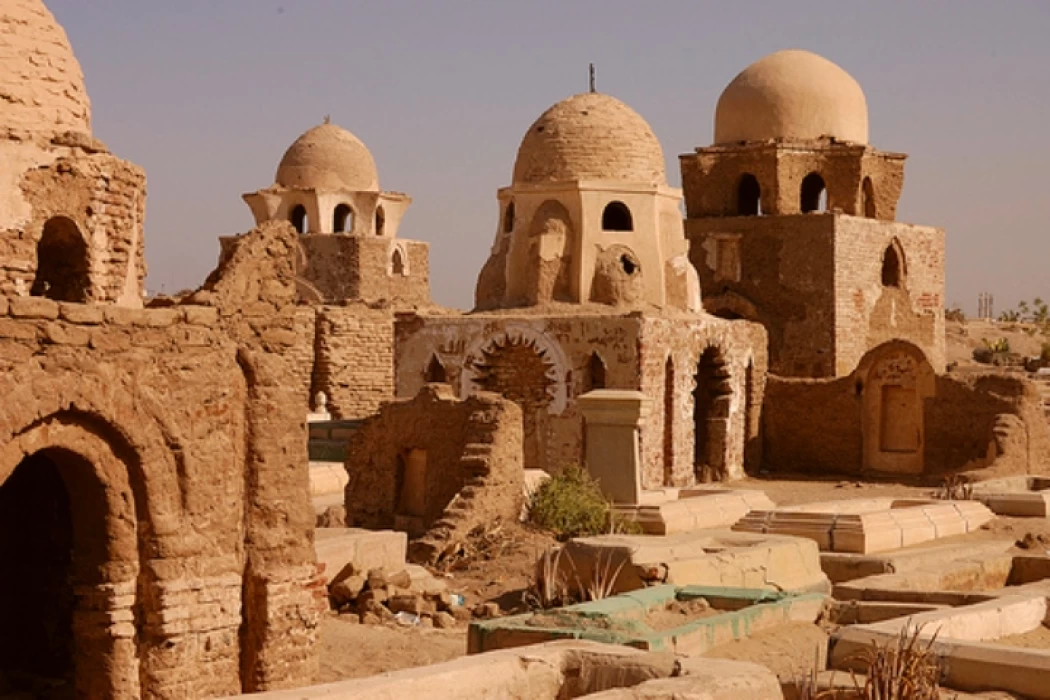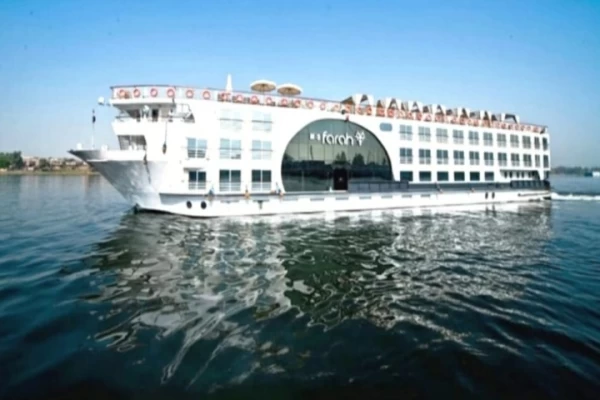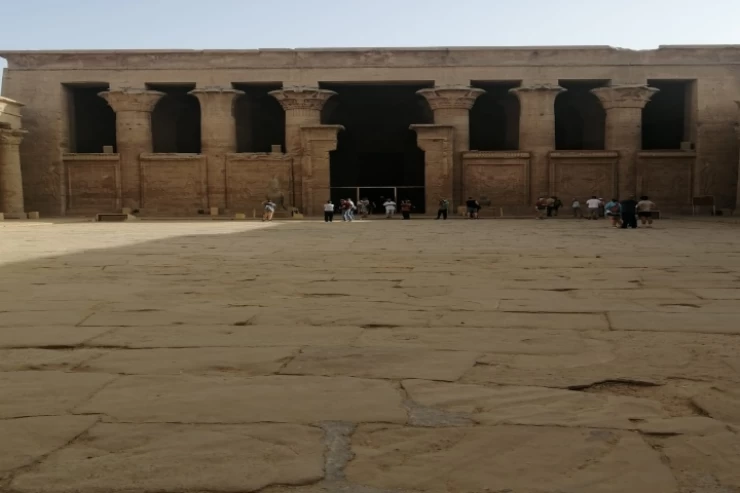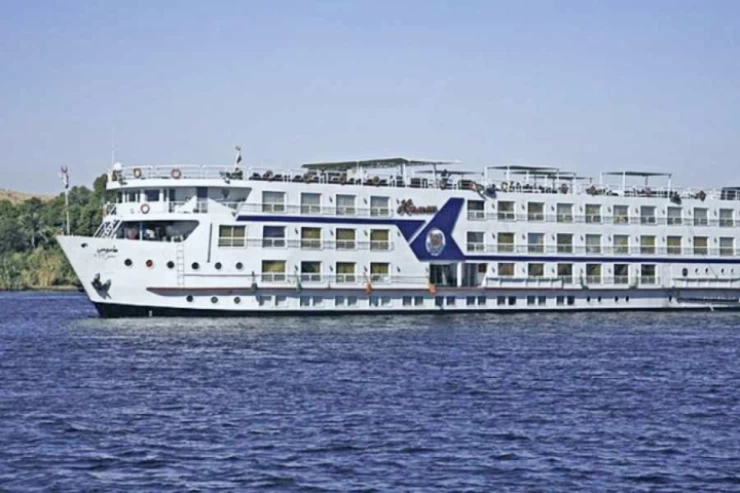
The Fatimid Cemetery | Aswan Fatimid Cemetery
The Fatimid tombs, which some know as the "Al-Anani" cemetery, due to the presence of the marine cemetery in the Al-Anani area, length is about 2000 meters, and its width reaches approximately 500 meters, with an area equivalent to 238 acres, and it is divided into two parts. In addition to the marine cemetery, there is also the cemetery Tribal, located on the Aswan Reservoir Road, specifically next to the Nubian Museum, and is also divided into three sections, separating the north from the middle by the reservoir road, and separating the middle from the south by a trench, the northern includes tombs in the form of a box, and the middle includes shrines surrounded by modest tombs, while it includes The south has 20 large mausoleums, smaller ones, and modest tombs.
The Fatimid tombs include about 80 tombs, but as a result of the factors of time and the neglect they were subjected to, and the weakness of the mud brick material used in construction, in addition to urban expansion, there are only 30 tombs left today, which forced the Supreme Council of Antiquities to intervene and develop the cemetery in several stages. It started with building a 600-kilometer wall around the cemetery and the museum store, restoring the domes, completing and strengthening the parts, isolating the foundations to remove the rubble from the ancient domes, and making doors and windows and closing all openings, to preserve the antiquities.
The most important characteristic of the Fatimid tombs in Aswan is the widespread domes, which archaeologists consider an important link in the development of domed architecture and Islamic architecture in general, especially as they are characterized by diversity in the shape and style in which they were designed, and their construction dates back to the beginnings of the first century AH and the middle of the sixth century AD. The evidence for this is the tombstone that dates back to the year 31 AH in the name of Abd al-Rahman al-Hijazi or al-Hijazi. The history of the Fatimid cemetery dates back to the years of the Arab conquest of Egypt, and to secure the southern borders, some soldiers were sent to Aswan, in order to repel the attacks of the Nuba tribes, and many huge battles took place between the two parties. The martyrs were buried in that area, and then the burials continued for many centuries.
Some of the people of Aswan believe that the Fatimid tombs include the remains of the press, so they call it the cemetery of the righteous, the blessed cemetery, or the kind. The shrine of Mrs. Zainab, the shrine of Bilal bin Rabah, the shrine of Umar bin al-Khattab, the shrine of Sayyid al-Badawi, the shrine of Sidi Ibrahim al-Dasuqi, the shrine of the Sharia judge, and many of the names of the family of the House, companions, and followers. The people of Medina visit them and seek blessings from them even in their joys.
The Fatimid tombs were called "Fatimid domes" due to the large number of domes in which they were built, which date back to the Fatimid era in its different periods. In the affairs of Islamic architecture and art, because of what it contained distinct architectural elements, whether in terms of the various arches, or the pivot doors, and the different stages of transition, in addition to the diversity of the shape of the dome itself, which leads us to talk about the ingenuity of the architect and the artist who surpassed himself and excelled when He violated the usual rules of architecture in the construction of the dome.
As for the most important scholars who studied the Fatimid domes, headed by the Italian scientist Monier de Villard, who numbered the domes to 55 domes, the British scientist Archibald Cameron Creswell, and the Egyptian scientist Farid Shafei, professor of Islamic architecture, they dated a group of domes in the cemetery, and in 2006 The German mission restored some parts, and the restoration process lasted about 8 years, although some other tombs were in need of restoration, especially in light of the impact of groundwater leakage on the tombs and domes of the cemetery, where wild plants and weeds grew.
The Fatimid tombs were built with a system of load-bearing walls like other Islamic monuments, i.e. in compact molds, and the prevailing building material in these tombs was mud brick, with the exception of some parts, such as the arches and the necks of the domes and the domes themselves, which were built of bricks, and stone strips appeared in some of these Graves, especially in tombs No. 10, 13, and 25 of the eastern group of the tribal necropolis. Plaster coverings also appeared in some other tombs, such as tombs No. 12 and 31, of the eastern group of the tribal necropolis, and tomb No. 5 of the western group of the tribal necropolis.
Recently, a neo-Fatimid style has emerged, used in restorations or in the revival building of modern Shiite mosques by Bohra Da'udi, which supposedly continues the original Fatimid architecture.
Egypt is the best destination to spend an extraordinary vacation, visit the Egypt travel guide, to learn more about the country's great and very long history, as we provide our clients with all the information and the needed details. Experience Egypt Tours with our team which will help you discover a lot of things to do in Egypt. Enjoy a refreshing cruise over the Nile River during Christmas tours in Egypt or during the amazing Easter tours in Egypt, This trip is also considered an ideal option if you are interested in the history of Egypt.

















